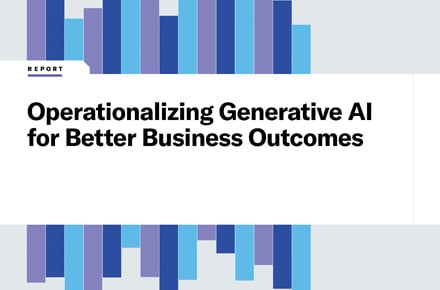Survey says? 5 key findings from our hybrid work study
marzo 9, 2023 / Joel Raper
Short on time? Explore the key takeaways:
- In collaboration with HFS Research, Unisys surveyed 2,000 employers and employees in the U.S., U.K., Germany and Australia about hybrid work.
- About 68% of employers surveyed already have implemented a hybrid work model — and 56% of employees prefer it.
- Resolving technology issues cost 49% of employees one to five hours in lost productivity each week.
- The right technology tools can help employees work more efficiently and collaborate more easily in a hybrid environment. However, employers don’t always deploy the technologies employees believe will help them be the most productive.
Replying to emails from the coffee shop down the street on Monday. Writing a project plan at a desk in the office on Wednesday. Brainstorming with colleagues on a video call while nestled on the sofa at home on Friday.
For many, this is the reality of hybrid work — a model in which employees spend a portion of each week in the office and work elsewhere the rest of the week. In fact, 68% of employers already have implemented a hybrid work model and 56% of employees prefer it, according to Unisys’ survey of employers and employees.
We previously asked U.S. business leaders and their employees what makes an ideal hybrid workplace. For our 2023 study, we partnered with HFS Research to examine the intricacies of modern hybrid work in four countries. We based our analysis of hybrid work on in-depth surveys of employers and their employees in the U.S., U.K., Germany and Australia, with 2,000 respondents from enterprises with revenue above $500 million.1
We surveyed employers — identified as managers and above — and employees with non-managerial duties. Our objective was to learn the perspectives the two groups shared — and areas where they disagreed. Here are five of the top findings from our survey to help inform your hybrid work strategy.
Finding #1: Hybrid work has become THE workplace model
Most employers surveyed have already opted for a hybrid model. Of those planning to change their workplace model within the next two years, only 11% plan to move to a fully in-office environment. Most organizations plan to stick with hybrid but are changing the balance, so employees spend more time in the office than outside it or vice versa.
Hybrid work’s popularity makes sense, given its tremendous benefits. A whopping 87% of employees who have embraced a hybrid work model say it’s effective. However, just 26% of employers say they’ve strongly pivoted their management style for hybrid work.
Learn more: So, is there anything that might entice employees to return to the office? Read the report.
Finding #2: Employees want access to more technology tools
Technology tools are invaluable for hybrid employees, especially if organizational change management is used to introduce them effectively in the hybrid workplace. The right technology can make a huge difference in employees’ ability to collaborate and be efficient — but what is the “right” technology? Employers and employees disagree on which technology tools are most useful.
It’s not all bad news, with employers and employees in alignment on the top two: web-based video collaboration tools and online portals for data access. These tools top employee wish lists and are the most deployed technologies by employers. About 76% of employers have deployed web-based video collaboration tools — something 68% of employees want. And 51% of employers have deployed online portals for data access — something 76% of employees want.
However, employers and employees don’t see eye to eye on certain technologies further down the list. For example, 67% of employees ranked video conferencing as “very important,” but less than half that percentage of employers (38%) have deployed it. An even bigger gap exists for smart assistants/chatbots, which 60% of employees want to assist them with completing tasks, but only about one-fifth of the employers surveyed (21%) provide.
Learn more: Explore the report for details on the specific productivity and collaboration technologies in which employers plan to invest.
Finding #3: Restrictive security policies come at a productivity price
The hybrid work model creates more endpoints and potential access points for bad actors. The increased security risk is a major reason for some organizations’ hesitancy in moving to this model. In fact, nearly half of employers (48%) requiring employees to come into the office every day cite “higher security risk with remote workers” as their primary reason for the mandate.
But to be productive and collaborate effectively, employees must be able to share files and sign into systems easily, regardless of location. Unfortunately, corporate security policies “always” or “often” (33%) create roadblocks in their ability to do that, according to employees. Employers are aware of this issue, with 35% calling the impact “very high” or “high.”
Learn more: What percentage of employers believe security policies don’t impact work? Hint: It’s probably higher than you think.
Finding #4: Technology issues cost employees — and enterprises — hours of productivity
Few office challenges are as frustrating as when good technology goes bad. Employees rely on fast access to email, shared documents and systems, and collaboration and planning tools. Little can get done when technology rebels. That is, beyond sipping a cup of coffee or tea in frustration while waiting for IT support to come to the rescue. Even when the issue is resolved, employees might be so drained and frustrated from their support experience that they call it a day, pushing any outstanding work to be addressed tomorrow.
While this is a familiar workplace experience — everyone has probably endured lengthy chats or phone calls with IT to resolve a technology issue — you may be surprised with how much time all that waiting amounts to in lost workforce productivity.
According to survey respondents, resolving IT issues costs 49% of employees one to five hours a week. About 23% spend more than six hours a week dealing with technology failures. The good news is that companies have plenty of opportunity to break this pattern: about 92% of employees say they’re “very willing” or “somewhat willing” to share data if it will enable their technology issue to be fixed more quickly.
Learn more: Read the report for details on the number of employers currently measuring productivity loss due to IT support delays.
Finding #5: EX programs can increase engagement and productivity
Employees will leave organizations that don’t prioritize employee experience (EX), which is why we’ve previously shared how IT and HR can use EX to attract and retain top talent. EX encompasses the entirety of the employee journey, from the recruitment and hiring process through the offboarding process when they leave the company.
An organization’s physical workspace, company culture and technology deployments all play major roles. They can determine if someone is raving about the company to family and friends and excited to dig into projects or counting the days before they leave for another job.
Of organizations with “very mature” EX programs, 74% of employees are more engaged than they were six months ago, according to employers. That’s in contrast to the estimated 59% of employees at organizations with “somewhat mature” EX programs and 24% of employees at organizations with “not mature” EX programs.
Employers and employees both ranked employee productivity as the top “significant” impact of EX on business outcomes (34% and 35%, respectively). Our study also explores perspectives on EX’s impact on company revenue, customer experience and company profitability.
Learn more: Read the report to see how employers and employees ranked the importance of EX initiatives, such as training, rewards, collaboration tools and wellness checks.
Explore more hybrid work insights
Our survey shows that hybrid work has become the preferred workplace model for both organizations and employees. If you already have a hybrid model or are moving toward one, you can increase the chances for success by:
- Giving employees the right collaboration and productivity tools.
- Striking the right balance between security and productivity.
- Minimizing IT support delays.
- Launching EX programs that can ultimately lead to better business outcomes.
Download From Surviving to Thriving in Hybrid Work for more findings and insights to guide your hybrid work strategy.
Explore our employee experience offerings to learn how Unisys can help you create the frictionless hybrid workplace employees expect — while reducing IT costs and increasing efficiencies.
1 For Australia, enterprises with revenues exceeding $250 million.
















